Huawei, also known as Icarus these days, continues to shoot for the stars with the Huawei Mate 50 Pro. Can the finest Chinese manufacturers survive without Google? This test provides an answer to the question.
If I had to pick one smartphone from all the ones I’ve used and evaluated today, it would have to be the Huawei Mate 20 Pro. The latter, on the other hand, comes from a time when Huawei was not under the surveillance of global authorities and its foreign trading was unrestricted. Nowadays, the Chinese company has undergone significant changes, and its geopolitical misfortunes have forced it to sever ties with Google. This does not hinder it from constantly providing the pinnacle of its expertise with the Huawei Mate 50 Pro. But does he know how to make his potential purchasers forget a really tragic situation?

TECHNICAL SHEET
| Model | Huawei Mate 50 Pro |
|---|---|
| OS version | HarmonyOS 3.0 |
| Manufacturer interface | EMUI |
| screen size | 6.74 inches |
| Definition | 2616 x 1212 pixels |
| Pixel density | 428 ppp |
| Technology | OLED |
| SoC | Snapdragon 8+ Gen 1 4G |
| Graphics chip (GPU) | Adreno 730 |
| Memory (RAM) | 8 GB |
| Internal memory (flash) | 256 GB, 512 GB |
| Camera (back) | Sensor 1: 50 MP Sensor 2: 13 MP Sensor 3: 64 MP |
| Camera (front) | 13 Mp |
| Video recording | 4K@60 IPS |
| Wi-Fi | Wi-Fi 6 (ax) |
| Bluetooth | 5.2 |
| Bands supported | 2100 MHz (B1), 800 MHz (B20), 1800 MHz (B3), 2600 MHz (B7), 700 MHz (B28) |
| 5G | Non |
| NFC | Yes |
| Fingerprint sensor | Under the screen |
| Ports (inputs/outputs) | USB Type-C |
| Battery | 4700 mAh |
| Dimensions | 75,5 x 162,1 x 8,5 mm |
| Weight | 209 grammes |
| Colors | Black, Silver, Orange |
| Price | 1 199 $ |
READ ALSO : The Futuristic Headphone Dyson Zone
DESIGN
Unquestionably high-end. These are the two terms that best describe the Huawei Mate 50 Pro, whose nobility of materials is visible from the moment your skin makes touch with its chassis. As is customary, we discover an all-glass smartphone with rounded corners meeting on a metal outline for a very comfortable, skin-pleasing grip. The smartphone is still fairly big, and as a result, it can be a touch slippery, especially given its light weight of 209 grams. But here it is: this is the premium segment’s lot today.
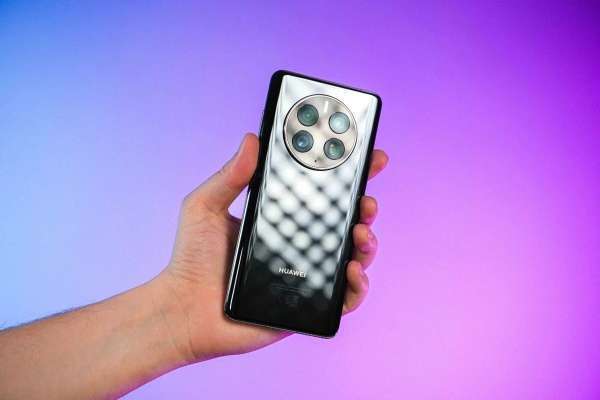
This massive center island in the back is what truly distinguishes it. Not for naught, four extremely large picture sensors are still housed in a square in a huge golden circle nicely placed on the top rear. It is true that we cannot confuse this Huawei Mate 50 Pro with any other gadget, yet this island still outperforms. However, because to its massive size and the fact that it is centered, the Huawei Mate 50 Pro rarely moves when lying flat. Small consolation for those with two left hands: it is IP68-certified, so a dropped drink does not frighten him in the least.
On the front, its curved screen design allows it to significantly reduce the visual effect of its almost non-existent bezels. However, we can’t overlook a sizable but fine notch that looks straight out of the Apple universe: although most Android makers have abandoned 3D face recognition in favor of a reader, Huawei is still relying on it. fingerprints embedded behind the screen to securely identify you

We stick to the great classics otherwise. An infrared transmitter is located on the device’s top. The lock and volume controls are located on the device’s right side. The USB-C connector is located below, flanked by the SIM hatch and the main speaker.
There isn’t one: Huawei constantly creates stunning gadgets. The Mate 50 Pro is a giant of its sort, but it’s a behemoth made with goldsmithery that screams excellence. Only minor issue with use: due to the placement of the photo block, you may tend to rest your finger on its modules, which means you must clean them on a regular basis if you don’t want misty shots.
SCREEN
The Huawei Mate 50 Pro features a 6.74-inch OLED display with a resolution of 2616 x 1212 pixels, which falls between Full HD and Quad HD, and a maximum refresh rate of 120Hz. Its touch sampling rate can reach 300 Hz.

We were able to measure a maximum brightness of 564 cd/m2 in SDR mode and up to 1000 cd/m2 in HDR mode using our probe and the DisplayCal program. The Huawei Mate 50 Pro has two display modes: natural and vivid. The natural mode adapts the color space between sRGB and DCI-P3 based on the material presented, while the vivid option pushes the colors to their greatest brightness in the DCI P3 space.

In Natural mode, using a web browser to activate the device’s sRGB mode, we discover coverage of 102.2% of the sRGB space, 72.4% of the DCI P3 space, and 70.4% of Adobe RGB. The average color temperature here is 6150K, which is a touch too warm, with a delta e00 of 3.07. In Vivid mode, we discover 138.2% coverage of the sRGB space, 97.9% coverage of the DCI P3 area, and 95.2% coverage of the Adobe RGB space. The average color temperature recorded is 6937K, which is a touch too chilly, for a Delta E00 of 3.36 points.

While alternative test settings may give superior calibration in Natural mode, these test conditions highlight a crucial point: it is not feasible to block the smartphone in sRGB or DCI P3 mode without making tradeoffs. To ensure that you always have the DCI P3, you must use the Vivid option, which is not as well calibrated. If you want the finest calibration possible, you’ll have to cope with Huawei’s automation, which will automatically transition between sRGB and DCI P3.
READ ALSO : The full Pretty design of Pixel Fold
A weird selection for an otherwise outstanding panel. We anticipate that the next version will simply allow you to select the natural DCI P3 mode without further ado.
SOFTWARE
This is where the issue arises. You now know: Huawei utilizes Android as a foundation, but it no longer has access to Google services that contribute to the richness of the mobile ecosystem. So, at the time of writing, EMUI 13.0 was running on Android AOSP and had the October 2022 security patch loaded.
Understand that if Google services are not integrated, the Play Store is not installed, and certain old Android applications may experience issues in usage, such as identifying you. These services are being replaced by HMS, Huawei Mobile Services, which is attempting to fill the role that has been left vacant.

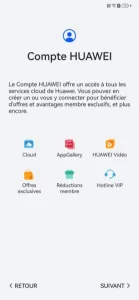
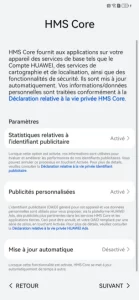
EMUI 13 is a decent interface with a lot of customization options. Its use, however, is more akin to iOS than Android, with two separate windows for alerts and system settings, as well as the lack of a default application launcher. Anyone who has ever used an Android smartphone, however, will never be lost.
To download and install programs, you must first visit AppGallery, Huawei’s application store. And this one is rather… depressing. Its experience may not please an Android user because it is not as comprehensive as the Play Store and is rife with adverts. Huawei appears to be aware of this, since any search for an application in the default web browser (not Chrome, of course) will immediately seek to install it in APK format for you. Yes, the AppGallery will even fetch APKs from the internet for you.



In addition to the adverts that occasionally interrupt the interface, the amount of data demanded for each activity launched on the smartphone might be frightening. There’s nothing to indicate that Android doesn’t take just as much, but the EMUI 13.0 experience feels a lot more intrusive. The point is straightforward: Huawei has yet to replace the hole left by the end of its relationship with Google, and nothing indicates that it will do so in the near future.
Most hackers can certainly toy with the device’s “limitations” (Android remains Android, with all of its openness), but why bother? This is the question that has persisted in my mind throughout this review.
AUDIO
In order to generate stereo sound, the Huawei Mate 50 Pro’s audio arrangement frequently depends on a primary speaker at the bottom of the smartphone combined with a listening speaker in support. The typically worthless listening speaker is a good assistance on the first loudness percentages, but it cannot keep up once the level goes above 50%. However, it produces sound quality comparable to entry-level devices, which is often not the case with a simple listening loudspeaker.

The Huawei Mate 50 Pro’s audio experience is a pleasant surprise. Particularly at the bass level, which is highly apparent even if it lacks impact. The voices are crisp and clean, and the sound does not saturate even at maximum volume. The mids are a touch disappointing, as they are removed in favor of the bass and treble, but this does not prevent it from providing a truly pleasing sound to the ear. On this ground, we are above average.
PHOTO
The major strength of Huawei smartphones’ photos is their main 50 megapixel lens, which offers a variable aperture from f/1.4 to f/4.0 and hardware stabilization. The second sensor is a 13-megapixel ultra-wide-angle sensor with an f/2.2 aperture, while the third is a 64-megapixel telephoto lens with an f/3.5 aperture and x3.5 optical zoom.

This implies that the most experienced among you will be able to change your perspective to generate more unique representations, which will be a force on mobile. Ordinary humans will naturally remain in automatic mode, which we are putting to the test here.
Main Sensor :
What else can I say except that the end effect is spectacular? The Mate 50 Pro’s sensor certainly strives to preserve the natural hues of the landscape, and it does so well. The colors pop, the crispness is wonderful, and any shot may be used as a wallpaper or as the foundation for additional photo building in strong sunshine.
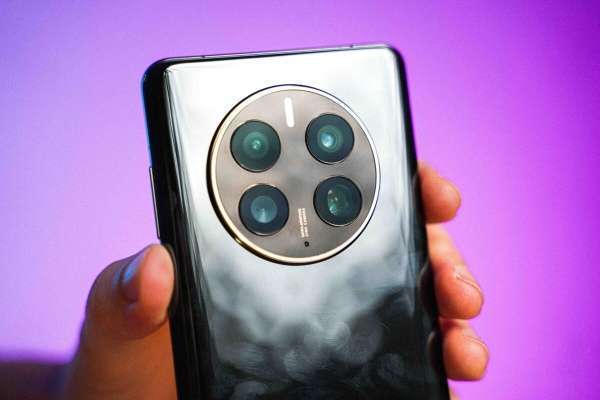
When the luminance drops, the sensor’s limits are revealed. We can see that the algorithmic editing works extremely well and knows when to employ picture softening and smoothing without distorting it too much, so that the quality of the shot is maintained without having too much noise. But there’s a catch: while doing so, and maybe as a result of the lack of a mechanical variable aperture, the smartphone struggles to deal with moving subjects, resulting in numerous out-of-focus or blurred faces. A natural and reasonable constraint to which one may readily adjust.
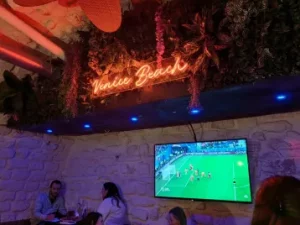

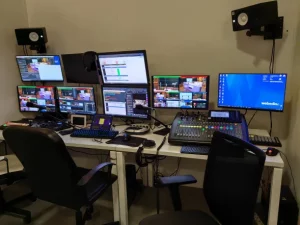

Ultra Wide-Angel Sensor :
The depiction differs somewhat between the primary sensor and the ultra wide-angle sensor, however the latter achieves excellent results in high light as predicted. In low light, however, we can see that Huawei pushes its algorithmic processing much too far to catch up with the physical restrictions of its sensor. As a result, faces that have been reproduced and polished by AI are no longer natural. It’s almost comical, yet in the face of these… things, we preferred the blur of the primary sensor.




Telephoto Sensor :
It’s funny to see that the telephoto lens has the reverse effect: it needs practically little software retouching on this camera. As a result, the filmed image appears more realistic, but the noise reappears with vengeance.




Portrait-Mode :
The portrait mode is fantastic and effortlessly outlines any subject. I really enjoy how it was able to go around my friend’s BG glasses despite the low light. The only disappointment is not being able to alter the effect of the post-capture portrait, as the Mate 50 Pro offers a variety of bokeh effects that would have been fascinating to experiment with at any time.
Front Sensor :
The portrait mode is fantastic and effortlessly outlines any subject. I really enjoy how it was able to go around my friend’s BG glasses despite the low light. The only disappointment is not being able to alter the effect of the post-capture portrait, as the Mate 50 Pro offers a variety of bokeh effects that would have been fascinating to experiment with at any time.
PERFORMANCES
We’re on familiar territory here, as the Huawei Mate 50 Pro employs the Qualcomm Snapdragon 8+ Gen 1, the finest SoC available in the Android market today. It comes with with 8GB of RAM and 256GB of storage, with the possibility to extend memory up to 256GB using NM SD cards.

| Model | Huawei Mate 50 Pro |
|---|---|
| AnTuTu 9 | 869785 |
| AnTuTu CPU | 168413 |
| AnTuTu GPU | 436572 |
| AnTuTu MEM | 134434 |
| AnTuTu UX | 130366 |
| PC Mark 3.0 | 11040 |
| 3DMark Wild Life Extreme | 2754 |
| 3DMark Wild Life Extreme framerate moyen | 17 FPS |
| GFXBench Aztec Vulkan/Metal high (onscreen / offscreen) | 54 / 51 FPS |
| GFXBench Car Chase (onscreen / offscreen) | 68 / 102 FPS |
| GFXBench Manhattan 3.0 (onscreen / offscreen) | 60 / 266 FPS |
| Sequential Read/Write | 1895 / 1097 Mo/s |
| Random read/write | 58000 / 85000 IOPS |
The Huawei Mate 50 Pro is undeniably one of the smoothest phones on the market, regardless of the experience you’re aiming to conjure. It has the sheer capability to run anything, from the most demanding 3D games to the most complicated multitasking. But here’s the thing: you still need to be able to run anything.
In the absence of Google services, Genshin Impact refuses to connect to its servers, and the AppGallery only offers PUBG Mobile as a 3D game that talks to everyone. A technically obsolete game, but one that is clearly extremely smooth even when pushed to its limit on the Mate 50 Pro.

Because of Google’s absence, all of this power is for naught.
NETWORKS AND COMMUNICATION
It should be noted that the Huawei Mate 50 Pro is not 5G capable, which is a major letdown given the device’s pricing and the compromises that must already be made to take use of it. It is otherwise WiFi 6E and Bluetooth 5.2 compatible, and its USB C 3.1 Gen 1 connector is DisplayPort 1.2 compatible for connecting the smartphone to an external screen in PC mode.
AUTONOMY
A 4800 mAh battery powers the Huawei Mate 50 Pro. It fully supports the manufacturer’s proprietary 66W SuperCharge rapid charging, but not the PowerDelivery standard. According to our measurements, you can charge your smartphone from 19 to 74% in just 20 minutes. It is also compatible with proprietary wireless charging up to 50W from the manufacturer.
The Mate 50 Pro did not outperform the competition in terms of battery life in our testing, but it did not disappoint. It will easily last a busy day, but you will have to walk through the rapid charging box to cash in on a second. It is simply positioned in the middle of expensive smartphones.
PRICE AND RELEASE DATE
The Huawei Mate 50 Pro has a recommended starting price of 1,199 dollars.


